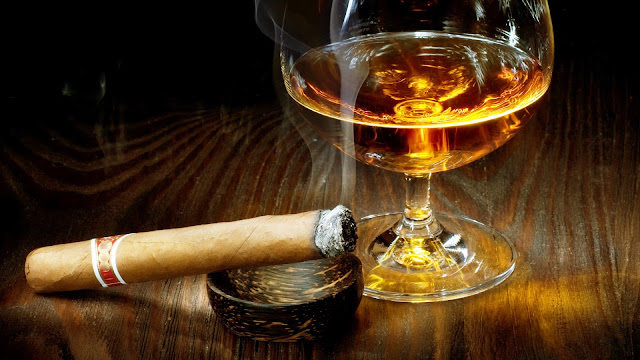The cigar has long been viewed as a luxury of the rich and powerful. Images of well-to-do men puffing on a stogie and swirling a glass of good brandy have been well documented and memorialized in films and TV. If you are just becoming interested in cigars and would like to relax with a stogie and drink after a long day's work, here are a few tips to get you started.
Traditionally, the cigar has been paired with a strong drink. Popular spirits include rum, brandy, or whiskey. Some argue that a good cigar should always be paired with a strong drink that has a hint of sweetness. Indeed, cigar smokers have long enjoyed these popular pairings. For years, the idea of pairing cigars with beer has gone overlooked. But why overlook good old beer? Recently, the trend has been to pair cigars with various varieties of beer. It seems that as cigars have entered the mainstream, it has been democratized and popularized. What better way to enjoy a puff of this newly popularized treat than to pair it with beer?
Pairing a good cigar with a good beer is not an easy feat, but when accomplished, it is well worth the effort. Much of the pairing has to do with your experience level. If you are a novice, you will probably need help in pairing your specific cigar with an appropriate beer. If you have a more experienced palate, and you know what you like, you can probably make connections between certain types of cigars and beers.
Because cigars are so strong and flavorful, one of the challenges in pairing is to find a beer that complements the intensity of most cigars. Most cigars will pair nicely with a good barely wine or a single malt scotch. If your cigar can be described as woody, spicy, with hints of cedar, try pairing it with a barley wine. The fruity hint of barely wine should complement nicely with the spicy flavor of your cigar. The combination of a spicy cigar with a slightly fruity beer can create an overall creaminess that enhances the flavors of each significantly.
If you have no clue as to what flavor combinations might work, experiment. First, find a cigar that you enjoy. Try to identify the characteristics that you enjoy about it. Then, find a beer whose flavors you think might 'match' or complement the cigar. Many incredible discoveries have been made in much this same way.














